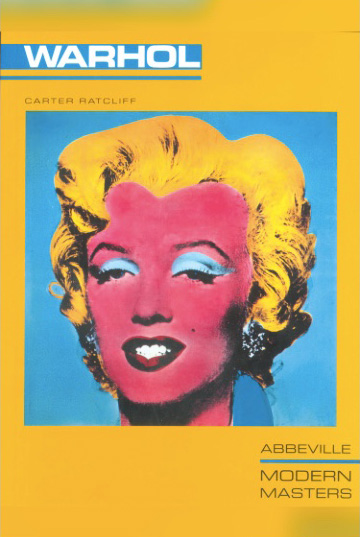Carter Ratcliff accuses Whitney Museum director of "facilitating a widespread scheme of image laundering."

Front cover of Warhol by Carter Ratcliff (Modern Masters)
December 16, 2018: Carter Ratcliff, who has written extensively on Andy Warhol and is the author of Andy Warhol Portraits (Phaidon, 2007) and Andy Warhol (Modern Masters Series) (Abbeville Press, 1983) has entered the fray concerning the Whitney Museum's Vice Chair unwillingness to step down, given that he is CEO of the company that sold the tear gas that was used against asylum seekers to the U.S. in a scathing article in Hyperallergic.
Nobody is naive about the amount of money that is required to run large institutions like the Whitney, but at what point do you draw the line? At what point does the money you accept become a moral decision? This isn't about art. It's about money. And morals. Would the Andy Warhol retrospective have gone ahead without Kanders' support? Yes. Would it have gone ahead without Kanders on the Board? Yes. Then why he is there? Kanders' excuse for the gassing of the immigrants seems to be (to paraphrase) that his company just makes the stuff and what people do with it is up to them. The manufacturers of Zyklon B offered a similar excuse during World War II. Tear gas may be less lethal but the principle is the same. Are Latinos less "human" than other nationalities who have sought asylum in the U.S.? Andy Warhol's parents were immigrants. So was Jonas Mekas.
The seller of tear gas is responsible for how it used because if it wasn't sold, it wouldn't be used. And it wasn't the first time it was used. The Miami New Times reports: "Safariland's products were also infamously used on American protesters during the 2015 Ferguson, Missouri, riots and the protests against the Dakota Access Pipeline in North Dakota. (One Standing Rock protester sued Defense Technology after she says one of the company's flashbang grenades nearly blew off her hand.)" Remember how upset everyone was in regard to the pipeline protests? Yet, the Whitney continues to defend Mr. Kanders. Website TYT details how Kanders' company has a "history of controversy."
Andy Warhol's art was often the art of protest. He didn't paint the Birmingham Race Riots or the Electric Chairs because he was in favour of them. When the term "Business Art" was used, it was used derogatorily. He refers to his other art - for instance, the art he produced with Basquiat - as "real" art. I can't think of any other artist as successful as Warhol, who has been more political. "Business Art" was a term invented in a book he didn't write which shares the name of this exhibition. Warhol would have been against using tear gas on immigrants, just as he was against using dogs on Birmingham race demonstrators.
It's clear that the Whitney is using the exhibition to promote membership of the museum. Many of the talks and special events are members only events, but you don't have to opt for an auto-renewal membership and you can cancel your auto-renewal if you have joined under that basis by ringing the museum. If you haven't seen the exhibition yet, wait until it shows at the San Francisco Museum of Art (November 12, 2018 - March 31, 2019); or the Art Institute of Chicago (October 20, 2019 - January 26, 2020).
If you do attend any of the talks at the Whitney in conjunction with the show, make sure you bring up the subject of moral responsibility. And if you are speaking at one of these talks, let your views be known.
See also:
"The Whitney Museum's Vice Chair's comment about gassing migrants sounds worryingly familiar."